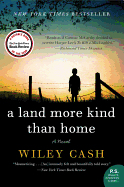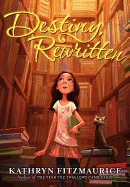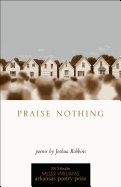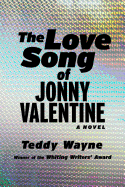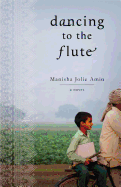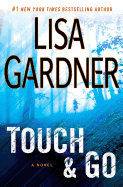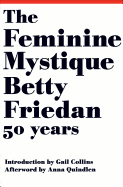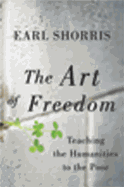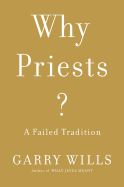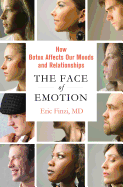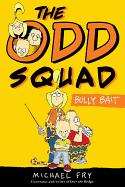Tuesday, February 19, 2013
Media coverage of "Hollywood's Most Spectacular Night," as organizers of Sunday's 85th Academy Awards modestly call their extravaganza, will include the endless red carpet refrain: "What are you wearing?"
Here's a read carpet alternative: What are you reading? After all, book-to-film Best Picture winners have been commonplace in recent years: Slumdog Millionaire (2008), No Country for Old Men (2007), Million Dollar Baby (2004), The Lord of the Rings: The Return of the King (2003), A Beautiful Mind (2001).
Five of the nine Best Picture nominees this year have a book connection, including Lincoln, based in part on Doris Kearns Goodwin's Team of Rivals; Life of Pi, adapted from Yann Martel's novel; Argo, inspired by events chronicled in Argo: How the CIA and Hollywood Pulled Off the Most Audacious Rescue in History by Antonio Mendez and Matt Baglio; Silver Linings Playbook, based on the novel by Matthew Quick; and Victor Hugo's book-to-musical-to-movie musical Les Misérables.
What am I reading for this year's Oscars? Three of my favorite "movie books":
Zona: A Book About a Film About a Journey to a Room by Geoff Dyer, which introduced me to the concept of "Tarkovsky-time." 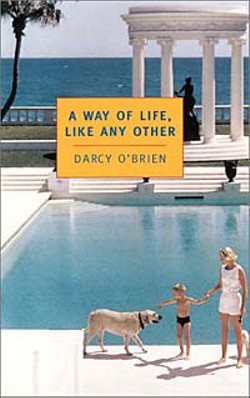 A Way of Life, Like Any Other by Darcy O'Brien, an under-appreciated, funny/poignant 1977 classic Hollywood novel drawn from the author's experiences during the 1950s as the son of fading movie actors. O'Brien offers a distinctly La-La Land take on the traditional coming-of-age story, while leaving us free to wonder precisely where he scuffed out the line between memoir and fiction.
A Way of Life, Like Any Other by Darcy O'Brien, an under-appreciated, funny/poignant 1977 classic Hollywood novel drawn from the author's experiences during the 1950s as the son of fading movie actors. O'Brien offers a distinctly La-La Land take on the traditional coming-of-age story, while leaving us free to wonder precisely where he scuffed out the line between memoir and fiction.
The Moviegoer by Walker Percy, which includes this lovely passage: "Our neighborhood theater in Gentilly has permanent lettering on the front of the marquee reading: Where Happiness Costs So Little. The fact is I am quite happy in a movie, even a bad movie."
I'd like to thank the Academy for making me happy, too, but my time's up. Cue the Oscar music. Exit stage left. --Robert Gray, contributing editor, Shelf Awareness
A Land More Kind Than Home
by Wiley Cash
Since its initial publication in April 2012, Wiley Cash's debut novel, A Land More Kind Than Home, has garnered widespread critical acclaim and won the Crime Writer's Association "New Blood" Dagger Award. From its very first pages, it is clear why this haunting and deeply resonant novel has struck such a chord with readers. It seeps in under the skin, its characters and powerful sense of place lingering long after the last page.
Set in the 1980s in Marshall, a small town in western North Carolina, the novel is narrated in the alternating voices of three characters: Adelaide Lyle, the elderly town midwife; Jess Hall, a sensitive and inquisitive nine-year-old boy; and Clem Barefield, the town's middle-aged sheriff, who has never fully recovered from a past tragedy. Together, these three voices fill in the links of a tragic chain of events as it unfolds in real time while also providing context and depth in flashbacks to times ranging from days to decades earlier. A minister--one of the creepiest and most frightening villains in modern fiction--who promotes snake-handling in the name of faith, a dead parishioner and the death of Jess's brother combine in a story that is both terrifying and beautiful.
Cash's attention to the details of Carolina cadences and physical geography contribute to the layered emotional landscape he creates for his characters. As the novel moves toward its startling but redemptive conclusion, it raises questions about the complicated nature of faith, family, and what constitutes real forgiveness. It is to Cash's credit that he manages to make it so easy for the reader. A Land More Kind Than Home is, above all, a great read; a beautifully written and transporting story. --Debra Ginsberg, author
Discover: A haunting and resonant novel about a small town, an evil preacher, faith, family and redemption.
The Red Kimono
by Jan Morrill
Jan Morrill's The Red Kimono tackles the fear, bitterness and broken lives that arose from the evacuation of Japanese Americans into internment camps during the World War II, drawing upon her mother's experiences to elevate history to a more intimate level. The book opens with the bombing of Pearl Harbor; living in Berkeley, the Kimuras anxiously await news from Hawaii of their eldest son, Taro. In the days that follow, Michio and Sumiko try to make life as normal as possible for their other children, 17-year-old Nobu and nine-year-old Sachiko, preaching gaman (patience) and shikata ga nai (acceptance of the current circumstances) even as their own community turns against them. A senseless act of violence sets a chain of events in motion that leads not only to the Kimura family's internment, but to the incarceration of one of Nobu's closest friends.
Morrill uses the viewpoints of three young protagonists to add depth to a period in American history that has been examined many times before; Nobu and Sachi's experiences are contrasted with that of Terrence, an African American teenager who sought retribution for his father's death at Pearl Harbor. What distinguishes The Red Kimono from other stories of the Nisei internment is its combination of raw emotional vulnerability and modern relevance. Morrill deftly exploits these dynamics--and the competing themes of race, grief, love and betrayal--in a compelling portrait of the Japanese American experience at the height of America's "Greatest Generation." --Nancy Powell, freelance writer and technical consultant
Discover: One of the country's most shameful moments is seen anew through the eyes of adolescence.
The Love Song of Jonny Valentine
by Teddy Wayne
In The Love Song of Jonny Valentine, his sophomore novel (after Kapitoil), Teddy Wayne gives voice to an 11-year-old phenomenon who understands the intricacies of marketing and image as well as any adult in the music industry. When it comes to the emotions he's experiencing as a preteen boy, though, he's lost and overwhelmed, simply looking for some kind of guidance.
Wayne's depiction of the awkward adolescent star is at turns funny, heart-breaking and eye-opening. From Jonny's staged "date" with a young female actress to his first hangover to his desperate search for a father he barely remembers, Wayne will likely stir a range of emotions in his readers, from tickled to mortified.
While The Love Song of Jonny Valentine is on its surface a look at what the industry does to a young child, it's also a look at the culture that created the industry, and the complex relationship between Jonny and his mother mirrors that theme. It is easy to criticize Jane for her actions, but looking below the surface to see the culture that created her is the greater challenge.
Jonny and his mother are joined by a diverse crew, each a well-drawn cog in the music system that plays out as Jonny's life. Ultimately, though, it's Jonny's voice--alluring and addictive--that Wayne delivers in perfect pitch, creating an earworm readers won't mind having stuck in their heads. --Jen Forbus of Jen's Book Thoughts
Discover: Through the eyes of an 11-year-old boy, the music industry is easy to understand; it's the rest of the world that's scary.
Dancing to the Flute
by Manisha Jolie Amin
Though Manisha Jolie Amin was born in Kenya and raised in Australia, her family was originally from India. As a child, she spent hours listening to her mother's stories of their native homeland, often accompanied by the sounds of a bamboo flute played by her father. Those treasured memories provide the basis for Amin's debut novel, Dancing to the Flute.
A young and abandoned boy named Kalu struggles to find food and shelter in a fictional village in India. Blessed with intelligence and charm, Kalu manages to survive, but also finds solace in the company of friends: Bal (the buffalo herder), Malti (a servant girl) and Ganga Ba (Malti's employer). Just as a serious foot infection threatens his existence, Kalu's softly blown notes through a rolled banyan tree leaf are heard by a traveling stranger. In exchange for healing his foot, the traveler arranges for Kalu to live and study with his brother, a renowned flutist. As Kalu grows into a true musician, he also learns how to sleep peacefully under a roof, to trust in the kindness of his new family and to maintain long-distance relationships with his village friends.
Amin deftly weaves Kalu's story with a smattering of Indian fables, myths and legends, carefully chronicling her main character's growth from boy into man alongside his evolution as a flutist. Amin's lyrical writing style suits the musical themes of the novel, and her descriptive gifts allow the reader to see, smell and hear all that Kalu and his friends experience on the page. --Roni K. Devlin, owner, Literary Life Bookstore
Discover: A lyrical coming-of-age story set in India about the power of music, the kindness of strangers and the rewards of friendship.
Mystery & Thriller
Touch & Go
by Lisa Gardner
From the outside, Justin and Libby Denbe look like the perfect couple with the perfect life--he's the head of a multimillion-dollar construction business; she's a jewelry maker with the artistic skills to turn their townhouse in Boston's ritzy Back Bay into an enviable showcase. They idolize their 15-year-old daughter, Ashlyn. Then, one day, the entire family disappears.
Justin's firm hires investigator Tessa Leoni (from Gardner's Love You More) to look into the kidnapping, which doesn't immediately generate a ransom demand. What could the perpetrators--who appear to be professionals, with a military background--want? And who hired them? As Leoni probes further, the case revives the pain she felt when her young daughter Sophie disappeared two years earlier.
Gardner does an admirable job of allowing her characters to be flawed without alienating readers. As the Denbes endure captivity, they realize they haven't interacted like a family in months. Libby has been popping pills; Justin had an affair; and Ashlyn--well, she has a pretty disturbing secret, too.
The ending is fairly predictable, and Gardner has a penchant for repetition--"flushed" and "murmured" can appear multiple times on some pages--but the journey is compelling as the Denbes confront the dismantling of their lives, even before the abductions, and slowly find strength during their darkest hours to pick up the pieces again. --Elyse Dinh-McCrillis, writer/editor blogging at Pop Culture Nerd
Discover: An exploration of a disintegrating family finding its strength again, wrapped up in a thriller.
Social Science
The Feminine Mystique (50th Anniversary Edition)
by Betty Friedan
In 1963, Betty Friedan's The Feminine Mystique gave both an identity and a shape to the "problem that has no name" among U.S. housewives: the vague, nagging feeling that there must be more to life than keeping house and raising children, coupled with the uncertainty of knowing where or how to begin seeking it. By doing so, Friedan blew the lid off modern life in an intense, deeply personal way.
This 50th-anniversary edition of The Feminine Mystique contains Friedan's original text, plus her introduction to the 10th-anniversary edition and her 1997 essay "Metamorphosis: Two Generations Later." It also has a new introduction by New York Times columnist Gail Collins and a new afterword by Anna Quindlen. Like the book they discuss, Collins's and Quindlen's contributions are, as the former puts it, "supremely, specifically personal." While both acknowledge the book's impact on the culture at large, they also emphasize how The Feminine Mystique changed their own lives and the lives of their mothers. These additions enhance the original text without obscuring its value, retaining the strength of its original publication and in some ways transcending it. In the context of the women's liberation movement, the resulting backlash, and the emergence of third-wave feminism, The Feminine Mystique at 50 only highlights how far we have come--and how far we have yet to go. --Dani Alexis Ryskamp, blogger at The Book Cricket
Discover: A seminal work of sociology, a starting point for anyone seeking to understand the roles and work of American women in the past half-century.
The Art of Freedom: Teaching the Humanities to the Poor
by Earl Shorris
It's no secret that a person's socioeconomic status affects their education. When Earl Shorris started a humanities course at Manhattan's Roberto Clemente Family Guidance Center in 1995, college education was beyond the reach of many of its low-income clients. The Art of Freedom reveals how an idea planted by a conversation with a female maximum security prisoner evolved over 20 years into a revolutionary college-level course for the poor, imprisoned and disenfranchised with a global reach.
Throughout his life, Shorris, who died in 2012, remained devoted to the idea that what is offered at the best colleges to the students with the most advantages can also be of great use to those from more marginal backgrounds. He offers examples of the student successes and failures he's seen, in first-rate prose that possesses both a reporter's eye for telling detail and a poet's gift for the well-turned phrase. The students come marvelously alive on the page, as do Shorris's fellow educators and administrators who plan and develop the curriculum--which they pointedly never "dummy down" for the socioeconomically disadvantaged students.
Humanity shines through in his accounts of hard-bitten students gaining a deeper understanding from the great books of the Western canon--intellectual heavyweights like Petrarch, Augustine and Dante--beyond what the average college freshmen could achieve. The Art of Freedom is a fitting monument to Shorris's life and proof that a good book can be as life altering as anything in this world. --Donald Powell, freelance writer
Discover: The late Earl Shorris helped the urban poor connect to the classics of Western literature by relating those books to their life experiences and helped them find a path out of poverty.
Religion
Why Priests?: A Failed Tradition
by Garry Wills
For decades, Garry Wills has written about Catholic matters with a keen intellect and lacerating wit. While he has grown increasingly critical of the Church's hierarchy and never shied away from cataloguing its historical sins, Why Priests?: A Failed Tradition might be his most incendiary work yet.
In a brilliant exegesis, Wills artfully proposes that the Book of Hebrews, a late addition to the New Testament, was added to justify a priestly caste that exists to this day. This permanent priesthood was put in place along with other, linked, strands of Catholic tradition like apostolic succession and the real presence of Christ in the Eucharist; Wills maintains that all of these traditions rest on suspect biblical interpretation, often filtered through corrupt power structures interested more in maintaining the status quo of the ruling hierarchy than in advancing the faith.
The Jesuitical leaps of logic are impressive to behold and are never less than intellectually stimulating, though Wills often comes across more as an aggrieved and disappointed lover than a dispassionate professor. With its in-your-face subtitle, Why Priests? may not convert devout Catholics over to Wills's way of thinking, but underneath the incendiary rhetoric lies a man of faith. While his conclusions may be anathema to some, the clear conscience and conviction from which he writes and the intelligence displayed deserve admiration. --Donald Powell, freelance writer
Discover: A preeminent scholar of the Catholic Church's history reconsiders its theological roots and calls into question the validity of the priesthood itself.
Health & Medicine
The Face of Emotion: How Botox Affects Our Mood and Relationships
by Eric Finzi
Most of us know of Botox as a temporary reprieve from aging, but it might be able to serve a larger purpose than simply keeping wrinkles at bay. Dermatologic surgeon and artist Eric Finzi claims, in The Face of Emotion, that Botox may even be a salve against negative facial displays of emotion.
Finzi's interest in Botox is personal. His mother suffered from a debilitating form of depression; as an adolescent, Finzi became all too familiar with the looks of despair and sadness worn by the clinically depressed. As a surgeon, he experienced the drug's effectiveness in dermatologic restoration and also uncovered studies pointing to its success treating migraines and Parkinson's disease symptoms.
What if facial expressions direct, rather than reflect, our emotions? Finzi devotes considerable time on explaining the underlying neurological and physical mechanisms behind emotional awareness, communicated by a turn of the mouth or the knitting of a brow, before circling back to his advocacy of Botox (and smile therapy) as a deterrent to negative emotion. Because Botox can freeze frown lines, he writes, it reduces emotional negativity.
The smile and frown may be the yin and yang of facial expressions, but it is the frown that serves as the exclamation point for emotional revelation. Still, despite Finzi's enthusiasm, while it is true that Botox (when used in moderation) is harmless compared to many drugs, additional research is needed before it becomes the next big breakthrough for the clinically depressed. --Nancy Powell, freelance writer and technical consultant
Discover: Botox, modern medicine's miraculous fountain of youth, might also be an antidepressant for the next generation.
Poetry
Praise Nothing
by Joshua Robbins
Stepping into the world of Praise Nothing is like getting lost in a forsaken prairie of violence, AM gospel radio, 1950s R&B, strip mall laundromats, trailer parks and truck stops. Joshua Robbins is foremost a storyteller, working in a formal but simultaneously colloquial style, with many poems structured in the traditional tercet stanzas of Dante, yet peppered with diverse pop figures like Buddy Holly and Janis Joplin and small-town entertainments like drinking where "empty tallboys glint" and "hotboxing" in a "junk-crammed singlewide." In their search for meaning, his narrators confront their own failures in a landscape of "jerry-rigged claptrap/ where cracked curb/ and razor gravel crosshatch" and "a midnight trucker's jake-braking/ detonates sound-wall concrete."
Robbins doesn't shrink from the bleak emptiness he finds around him. In their country ways, his characters keep searching, even if only to learn that "no bottle's/ peeled-back label will ever/ reveal anything other than darkened/ glass." Sometimes, however, like the narrator in "Theodicy," they recognize that "if God is with us,/ then maybe He lives around here, too,/ some duplex on a loop or a single/ apartment with a satellite dish... or maybe/ He's just driving, His window cracked/ to feel the cold as the sun descends." That's not a bad image with which to remember this fine first collection of poems. --Bruce Jacobs, founding partner, Watermark Books & Cafe, Wichita, Kan.
Discover: Robbins, a finalist for the 2013 Miller Williams Arkansas Poetry Prize, is afraid of neither formal structure, colloquial language nor the often dark world around him.
Children's & Young Adult
Destiny, Rewritten
by Kathryn Fitzmaurice
In Kathryn Fitzmaurice's (The Year the Swallows Came Early) latest moving novel, 11-year-old Emily Elizabeth Davis grapples with her identity and her passions.
Emily's mother named her for Emily Dickinson in hopes she'd become a poet, but Emily prefers romance novels to poetry. She's read almost half of Danielle Steel's books and copies down the happy endings of each. Fitzmaurice portrays a strong bond between mother and daughter, and chronicles the tension that develops between them over her mother's aspirations for Emily versus what Emily wants for herself, and her growing resentment of her mother's caginess about the identity of Emily's father. Rather than keeping a photo album for Emily, her mother records each milestone of the girl's life in the margins of a first edition of The Complete Poems of Emily Dickinson--"the road map of your life," she calls it. Just after Emily learns that her father's name is also recorded in the margins, the heroine inadvertently places the poetry book on top of some donation boxes. For the balance of the novel, she must search her town for the book--and her father's identity.
Emily grapples with whether destiny truly does rule her life, or whether she has the power to influence her own future. Her quest for the book and her attempts to make an impact on her future come together into a moving climax. Emily comes to realize that sometimes the answer you needed was right there all the time. --Jennifer M. Brown, children's editor, Shelf Awareness
Discover: An 11-year-old discovers that "the road map of your life" will not tell you who you are.
The Odd Squad: Bully Bait
by Michael Fry
Readers first meet Nick, the narrator of this first book in a planned series from Michael Fry (Over the Hedge), while he is stuffed inside his school locker.
Nick may be "the shortest twelve-year-old on the planet," but he has a rich fantasy life. He believes that Becky Harrison, the prettiest girl in school, is his girlfriend. At least in an alternate universe, it could be possible. And after Nick swiped his class's directory from the school counselor's office on his 29th visit, he learns the numbers of Roy's (the kid who routinely stuffs Nick in his locker) and Becky's cell phones. After his Memaw falls asleep to her favorite show, Nick uses her cell phone to pose via text messages as "Max" and both harass Roy and also become BFFs with Becky.
The school counselor decides that if the three biggest outcasts--Nick, uber-tall Molly and "husky" Karl--join together, the bullies will leave them alone. She forces them to create a three-man Safety Patrol. Her plan doesn't work. But they come up with a plan of their own, "Operation: Bully Bait," that brings the Safety Patrol, Roy, Becky and Max together in a hilarious climax.
Despite Nick's troubles at school, Fry portrays a loving relationship between the young hero, his insightful mother and his Memaw. Generous line drawings in the margins bear this out, as well as the fallout from Nick's plans gone awry. --Jennifer M. Brown, children's editor, Shelf Awareness
Discover: A tale, with illustrations, about a 12-year-old bullied boy who unwittingly assumes the role of bully--and tries to set things right.


